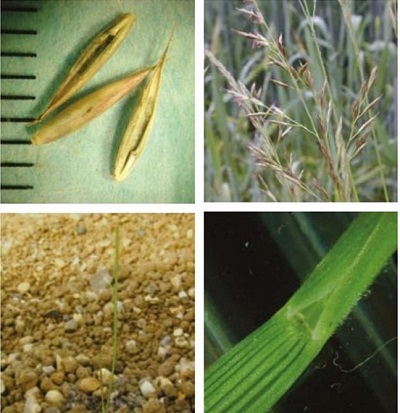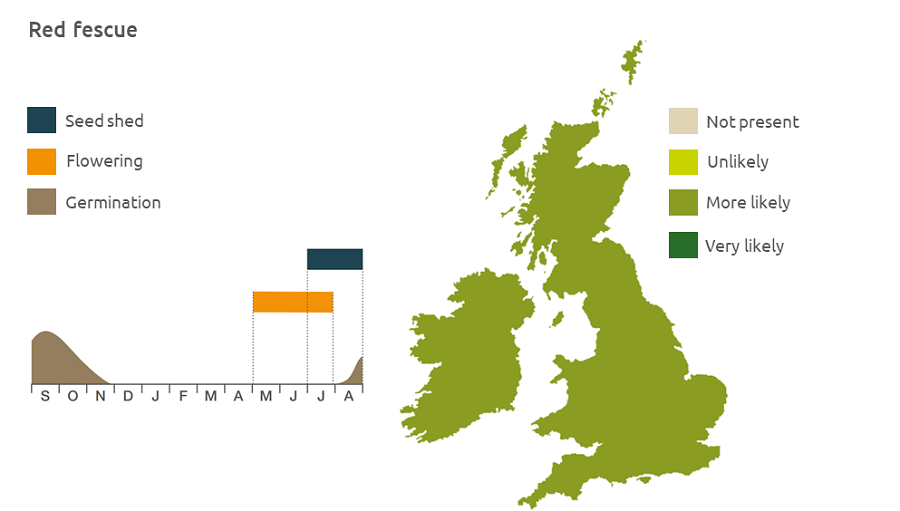- Home
- Knowledge library
- Distribution and biology of red fescue in the UK
Distribution and biology of red fescue in the UK
Red fescue is a grass weed found throughout the UK. Find out how to identify and control it.
Overview
Red fescue (Festuca rubra) can establish in arable land but does not persist with cultivation. It is commonly found in field edges and many other relatively undisturbed habitats. Red fescue grows rapidly in spring after overwintering. It can also reproduce vegetatively when the rhizomes which attach child plants die.
- It has value to biodiversity
Description
It is a densely tufted perennial grass, 15–90 cm tall. It spreads by rhizomes. The leaves are green or greyish-green and bristle-like. The flowerhead tapers to a point but is rather one-sided.
Key features
Plant: Stems are red at the base.

Location and life cycle

Geographic distribution
Red fescue grows over the whole of the British Isles in many grassy habitats such as road verges, meadows and pastures up to an altitude of 1,080 m. It has many varieties.
Soil type
It grows in alkaline-rich soils and even rocky habitats, but is not usually found where there is a large amount of exposed soils.
Seed statistics
- Seed longevity: 1–5 years
- Seed weight: 1 mg
- Seeds/head: 100
- Seeds/plant: 10
Management
It is relatively tolerant of foliar-acting herbicides because of its bristle-like leaves reducing uptake, so high doses are generally required.
For advice on herbicides, please speak with your agronomist or adviser.
When was this information last updated?
This page is based on content from the encyclopaedia of arable weeds publication. Since it was first released in 2008, the publication has been redesigned several times but not revised. However, it remains a good foundation for general information on the distribution and biology of weeds.

